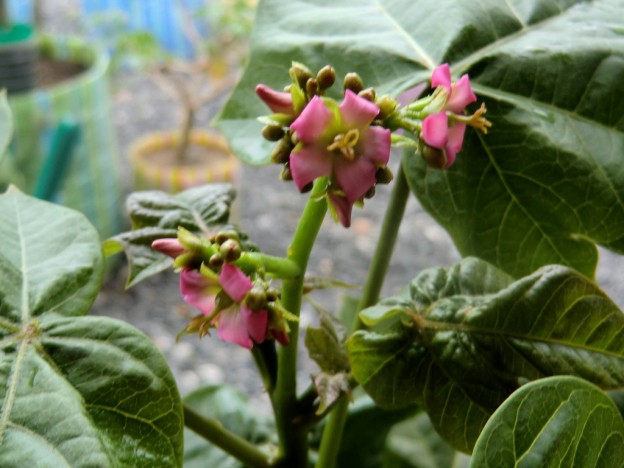When we originally became interested in growing Jatropha in a synergistic mix with food crops (commonly called inter-cropping) we did not have the slightest intention to move into anything like crop research. We simply intended to find us some good planting material, copy agronomic practices from a planter with more experience than us and get started.
Our initial business plans were based on numbers and “facts” available on the internet which gave us profitability results that looked very good. So we acquired some bush land in the Greater Accra region of Ghana and started a test farm. That was roughly 3 years ago…
Like many others we were soon to find out, that the truth about Jatropha as an energy crop of the future was quite different to the original picture we found. Luckily, we had only started a test farm with a concept that relies on JcL at only 30%. Otherwise we would have not survived like so many other ambitious projects started by others.
In 2009 already I gave my first presentation at a Jatropha conference explaining in detail, why the current approach of the emerging industry could only fail. The core elements of this speech still form a major part of our standard plantation presentation which can by found here. It lines out a number of advances needed to make Jatropha the energy crop everyone wants. A major part of this list is about superior planting material which unsurprisingly is not available today as no domestication process had ever occurred.
We spent some time looking for superior cultivars around the world only to realize, that they are actually not available. consequently we began looking at what would be needed to initiate our own breeding program.
We teamed up with Geneticlab, a private Italian company which had been doing intensive genetic research on Jatropha for some time. Thus we were able to establish a modern, genetic marker assisted hybrid breeding program based on prior detailed genetic diversity studies.
We eventually kicked of the program in early 2010. Intensive study of available scientific reports led to a breeding strategy which was highly ambitious to say the least. Non-toxic interspecific hybrids are at the core of the process, which meant moving on terrain nobody had ever passed for Jatropha.
We decided, to initiate a fast track proof-of-concept (POC) to test the most risky breeding hurdles on the planned development path. The POC will end in December 2011, but today, 5 months before reaching that critical milestone, we can be confident, that all intended interspecific hybrid crosses are actually feasible.
During the POC phase we have also built up a strong selection of proven genetically divers accessions which will form the initial parental material for the main program starting from 2012. These include “commercial” accessions from Asia, Africa and Central America together with true wild accessions. 4 of them have been positively tested as non-toxic, 1 as low toxic. In addition we have established 4 Jatropha species other than Jatropha curcas L. which will be used for interspecific crossings to bring distinctively favorable traits into our future main Jatropha lines.
 We have arrived at and actually already passed one of the most important milestones of our breeding program: our first interspecific Jatropha hybrid has opened flowers this morning.
We have arrived at and actually already passed one of the most important milestones of our breeding program: our first interspecific Jatropha hybrid has opened flowers this morning.